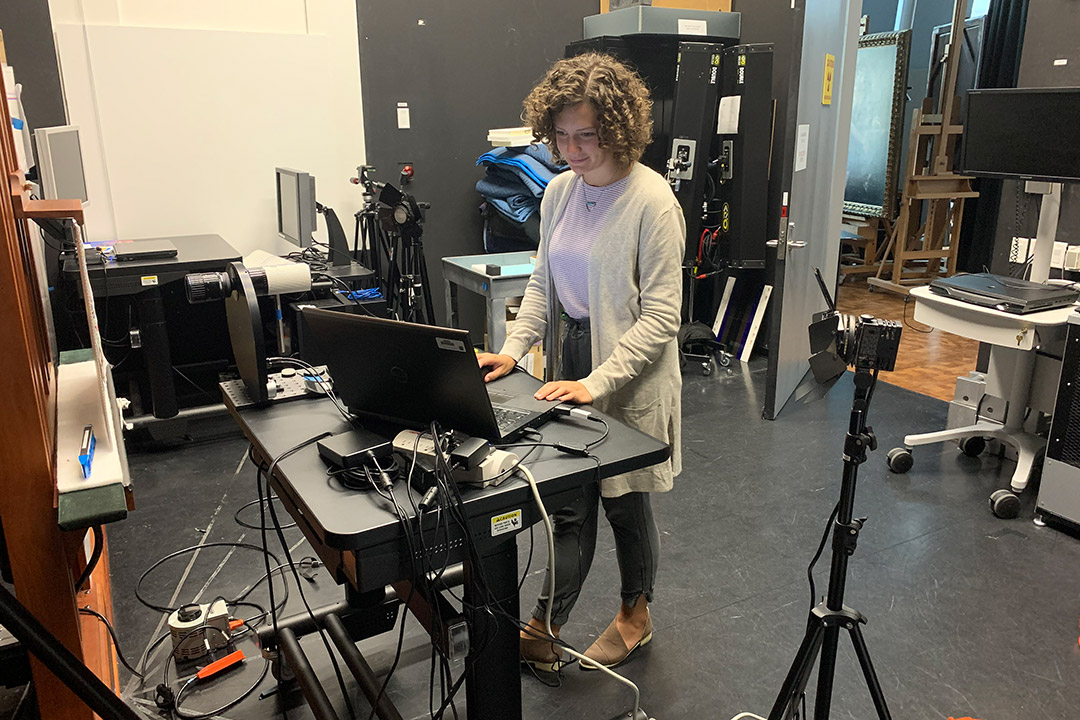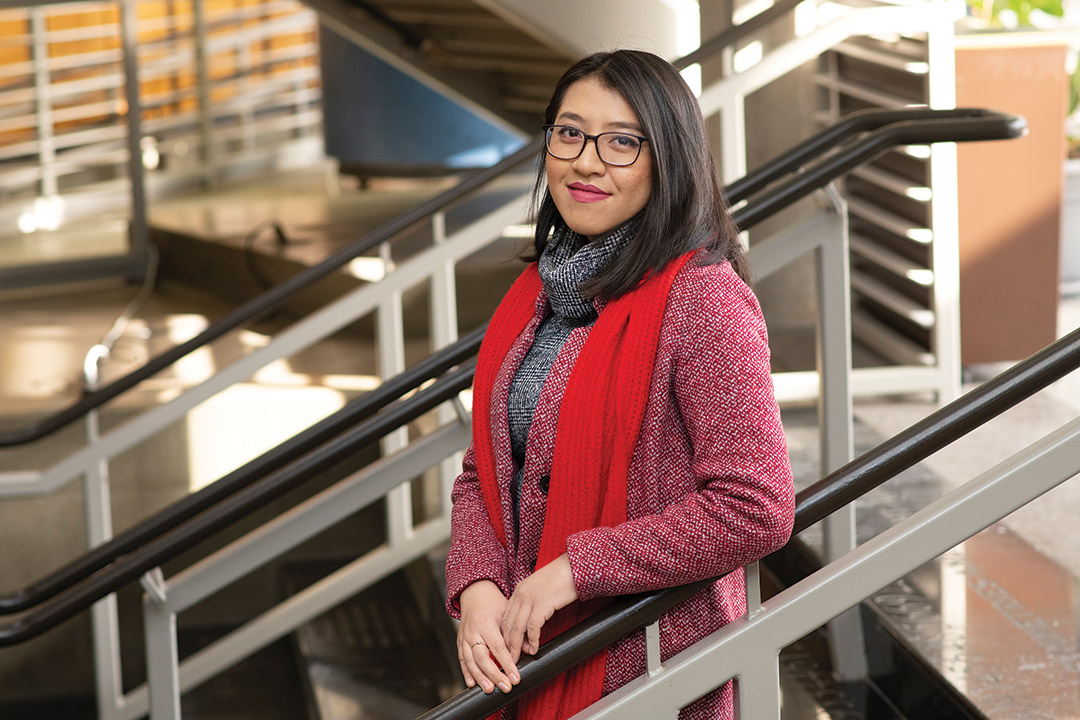Ph.D. students complement academic research with internships and co-ops
Douglass MacLennan
Olivia Kuzio completed a yearlong co-op at the Getty Institute for Conservation and two summer co-ops at the Smithsonian Museum Conservation Institute while pursuing her Ph.D. in color science.
Pancy Lwin sits about 2,700 miles from IBM Research Almaden, but she is helping scientists there develop methods to model how antiviral treatments impact the spread of flu-like viruses, including COVID-19.
A. Sue Weisler
Pancy Lwin, a mathematical modeling Ph.D. student from Myanmar, received an NSF INTERN award to work at IBM Research Almaden developing models that study the interplay of structure, statistical mechanics, and mechanics in biological systems.
Lwin, a mathematical modeling Ph.D. student from Myanmar, received an NSF INTERN award to work at IBM Research Almaden, based in San José, Calif., developing models that study the interplay of structure, statistical mechanics, and mechanics in biological systems.
Although the pandemic prevented her from doing the internship in person, she has been working remotely under the guidance of Barbara Jones, an expert in the area of theoretical condensed matter and statistical physics who leads theoretical and computational physics work at IBM Research Almaden. Lwin’s graduate advisor, Associate Professor Moumita Das, has collaborated with Jones on previous projects and made the connection, so Lwin seized the opportunity to complement her academics.
“Being a part of this project is awesome, honestly,” said Lwin. “It’s a very hot topic and we’re taking a theoretical approach to solving it. Biophysics is very complicated because you have interconnected processes in a biological system happening at micro and macro levels, but I’m hoping to help make some important findings.”
Undergraduates aren’t the only students taking advantage of RIT’s co-op and internship program. Across the university, Ph.D. students are securing prestigious work experiences like Lwin’s to provide important gateways to careers in industry, foundations, and government.
Interdisciplinary internships outside of RIT are a required component of Lwin’s Ph.D. program. She began her internship in February and will continue through August. Upon completion, she’s hoping to have a new set of skills to supplement those she is developing while working on her dissertation, as well as a better sense of opportunities that exist in industry.
Establishing those professional connections is important because more than 80 percent of RIT’s Ph.D. alumni go on to work in such settings rather than academia, estimates Twyla Cummings, RIT’s associate provost and dean of Graduate Education.
“I think our students bring a fresh and interesting perspective to these entities and there’s a clear benefit for both parties,” said Cummings. “It helps our students answer the question, ‘Is this really what I want to do?’ Or they gain some additional insight and experience that helps them shape not only their research for their dissertation, but also for their future.”
Data from the Office of Career Services and Cooperative Education shows that over the past five years, 84 Ph.D. students have formally reported completing 161 co-op placements at 90 employers. But that count is likely lower than reality because co-ops and internships are optional for most Ph.D. programs.
Olivia Kuzio recently completed her third co-op while pursuing her Ph.D. in color science, a program where co-ops are optional. She previously spent two summers on co-op with the Smithsonian Museum Conservation Institute in Washington, D.C., and in the fall she finished a yearlong co-op at the Getty Conservation Institute in Los Angeles.
In her co-op at the Getty Conservation Institute, Kuzio used analytical techniques to answer technical questions about artworks that conservators were working on restoring or stabilizing and that curators were thinking about putting in shows.
She said one of her favorite projects she worked on was a group of color studies from the Bauhaus in the early 20th century because of its focus on the art and science of paint mixing, and how the human visual system interprets color mixtures.
Another highlight was using imaging techniques on a 16th-century painting by Hans Holbein the Younger to reveal hidden features in the paint layers beneath the painting’s surface, which provided never- before-seen details about the artist’s creative process.
Kuzio credited her department’s faculty with providing Ph.D. students support to explore opportunities like these. One of her advisors, Professor Roy Berns, had previously gone on sabbatical and worked with the technical studies research team, saw the opening, and encouraged her to apply.
Kuzio said her co-op experiences have helped shape her career aspirations. She hopes to continue to work in the field of conservation science with the goal of working in a lab or studio affiliated with a museum.
“I’ve been so fortunate, I’ve learned a lot, and I feel like my knowledge speaks for itself,” said Kuzio. “I learn so much here on campus in my research, but it’s so enriched by the experiences I’ve had at the museums I’ve worked at.”









